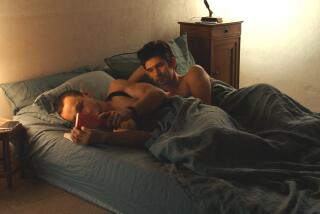Rated PG (pretty good)
THE ROOTS of the movie rating system -- which first went into effect 37 years ago today -- actually go back much further, to 1922. That was the year the still relatively young film industry was avalanched by a sex scandal involving one of the silent screenâs biggest stars, Fatty Arbuckle, who was charged with raping and murdering an obscure 25-year-old starlet.
There was outrage in the land, and Arbuckleâs trial -- along with several other simultaneous sex, drug and death scandals -- led to attacks on the movie industryâs âindecencyâ and its alleged promotion of immorality. The heads of the major studios, stung by the bad publicity, sought out Will Hays, a former chairman of the Republican National Committee and a pillar of purity in the sleaze-ridden Harding administration. Hays was one of those starched, high-on-the-neck, white collar orators, reeking of moral integrity. Just the fellow to be the first president of the Motion Picture Assn. of America.
Hays quickly devised what came to be known as the Hays Code, instituting stern rules for what could be shown on the screen -- and what could not. No open-mouthed kissing or âlustful embraces,â for instance. References to any form of âsex perversionâ were forbidden.
âNo picture shall be produced that will lower the moral standards of those who see it,â said the code. The code was voluntary. But the studios abided by it, and it gained extra force from the fact that the studios at that time owned practically all the first-run theaters in the country. You abided by the code or you didnât show your film.
In 1966, when I became president of the MPAA, the legacy of Hays remained. But not for long. This was a time of rebellion among the young, of the abandonment of social restraints.
Immediately, two movies challenged the code. One was âWhoâs Afraid of Virginia Woolfâ -- starring Richard Burton and Elizabeth Taylor and directed by Mike Nichols. It was a serious film, but it included language never heard before in a Hollywood movie (although by todayâs standards, it was so mild it could be screened at a nunnery). I quickly flew to Hollywood to meet with an actual living Warner brother -- Jack Warner -- who ran the studio with an iron fist. We talked for several hours. We finally agreed to take out one âscrew,â but after protracted negotiation, we left in the phrase âhump the hostess.â
When I left the studio, I thought, âHow silly can it get? Two grown men discussing such things!â
The next movie (also in 1966) was Michelangelo Antonioniâs âBlow Up,â which had a scene in which two nude women cavorted from room to room.
Thatâs when I determined to find a way to junk the Hays Code, but also to design a system that would give viewers (and especially parents) information to make intelligent decisions about what films they (or their children) should see.
I discussed the idea with theater owners across the country. They became full partners. In the months that followed, I met with the creative guilds -- the actors, writers, directors, producers. I told them I wanted to âfree the screenâ so no one could force them to change their movies. They nodded approvingly. âBut,â I went on, âsome films might end up restricted from viewing by children.â Now not so many nodding heads. I thought it was a fair balance.
Eventually the guilds came on board. Then more meetings -- with religious organizations, critics and with the film studios, which resisted at first.
We ultimately created a rating board of parents, offering advance cautionary warnings as well as information about content (taking into account sex, violence, language, etc.). The ratings today, as most Americans know, are G, PG, PG-13, R and NC-17 (which replaced the well-known X rating in 1990).
There are critics of the system. They want precision, as if movie ratings were like Euclidâs geometry, where the equations are so sweetly formed. But as I told one critic, âHey, even the Supreme Court decides law by 5-to-4 votes.â
Overall, the system has been a success. A poll this year showed that 79% of parents with children under 13 find it âvery usefulâ or âfairly useful.â
Can you think of a public official in the U.S. with a 79% approval rating? Neither can I.
More to Read
Only good movies
Get the Indie Focus newsletter, Mark Olsen's weekly guide to the world of cinema.
You may occasionally receive promotional content from the Los Angeles Times.









